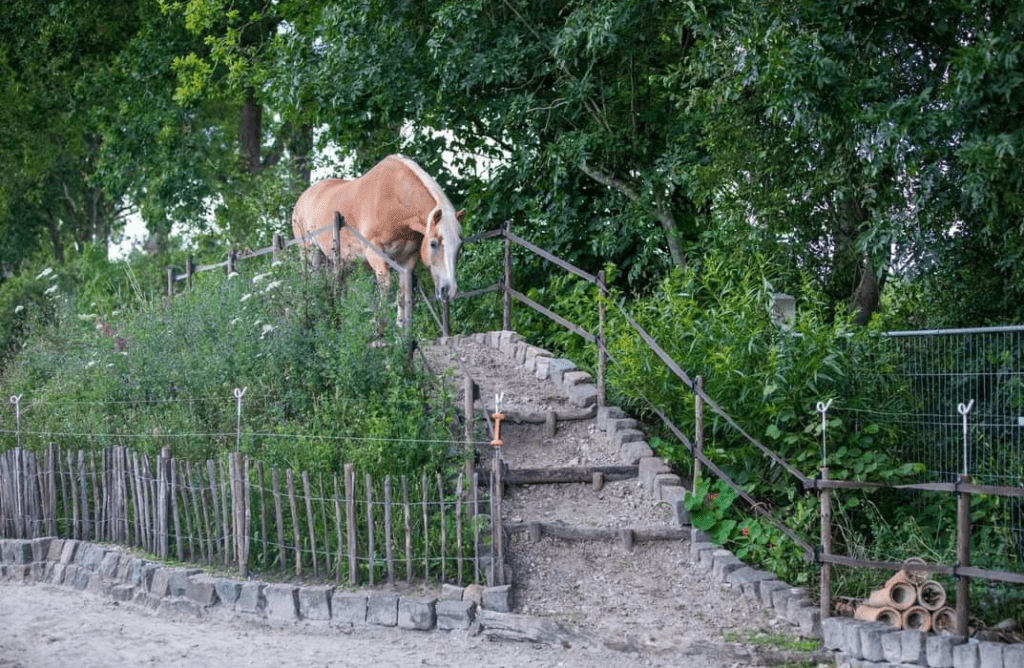- Why sustainability & enrichment is important
- How it started
- Living together naturally
- Healthy movement, healthy diet
- A labour of love
- Intelligent planting
- Islands in the sun
- Life's a beach
- Feeding the family
Domestic horse keeping can have a massive aversive effect on the horse´s emotional welfare and on the environment, when being kept in relatively small areas. As most people don’t have vast areas of land to offer their horses, it is imperative that we take inspiration from nature to learn how to recreate some natural elements so that the horses’ innate needs are met, whilst protecting the land against erosion and encouraging wildlife.
An increase in animal keeping, farming, and building development means that we need to put a conscious effort into the re-balance of nature for the future of our planet.
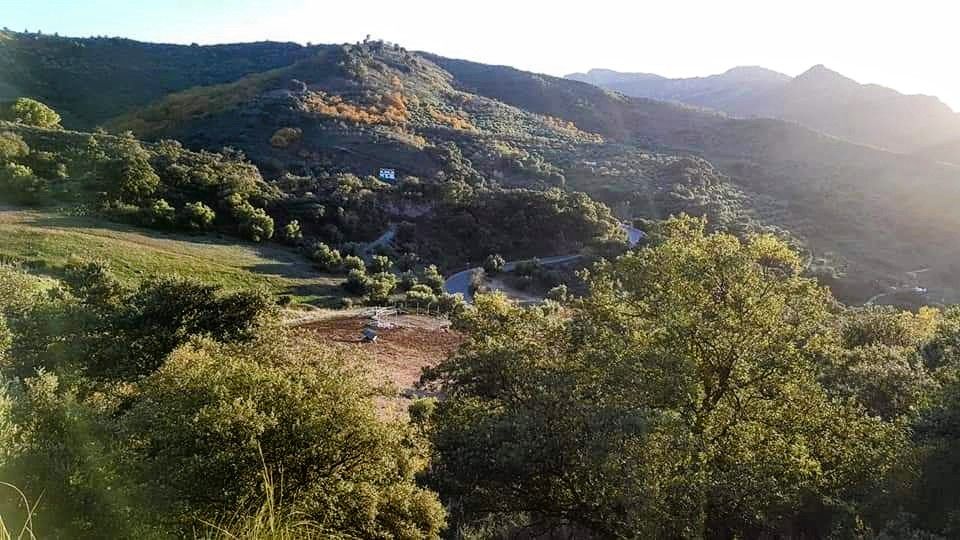
In the wild, the horse’s diet is much more varied than that of the domesticated horse. It would include shrubs, herbs and flowers of many types which usually are no longer available for either horse or insect. We aim to reintroduce these into our environment.
With clever design, we can recreate a little of nature within a restricted amount of land. This serves four main purposes:
- To protect the land from erosion – both for the land’s sake and so that the horses can enjoy it for much longer.
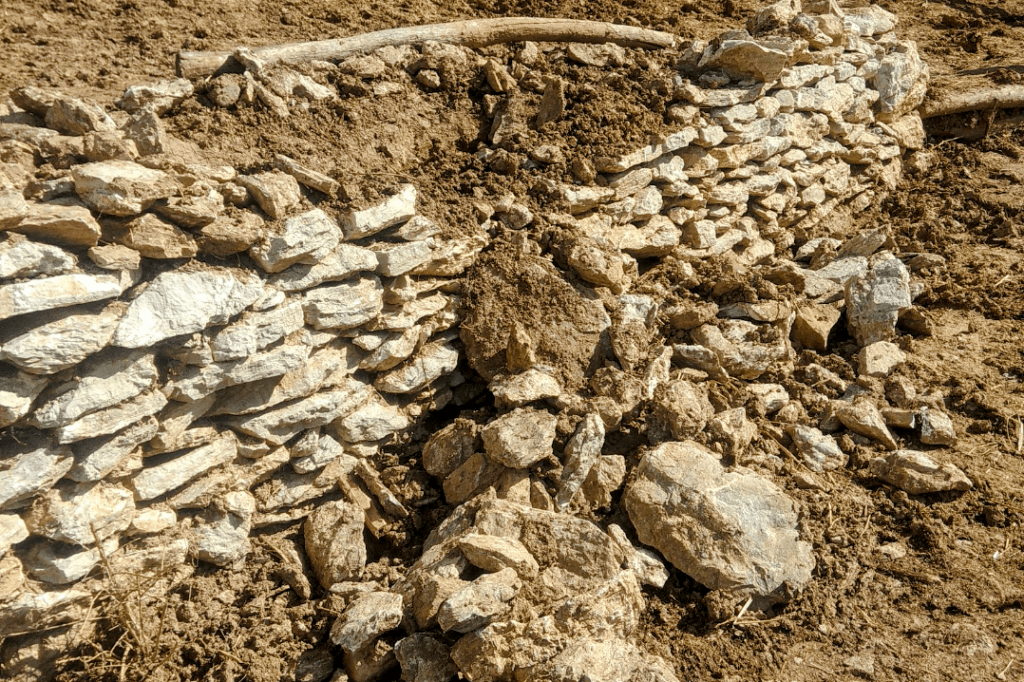
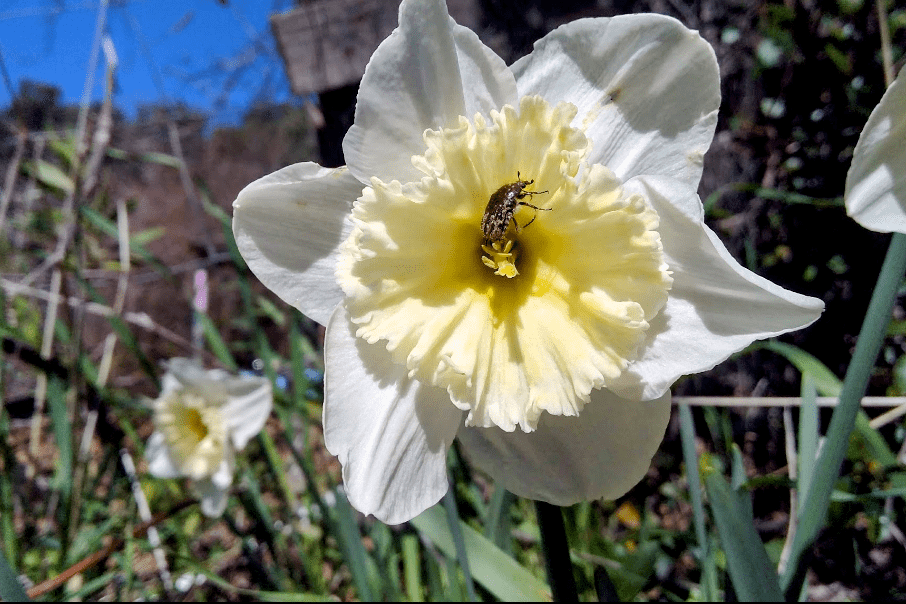
- To encourage insects which are imperative for healthy land.
- To provide the horses with more mental stimulation so they don’t get bored and frustrated.
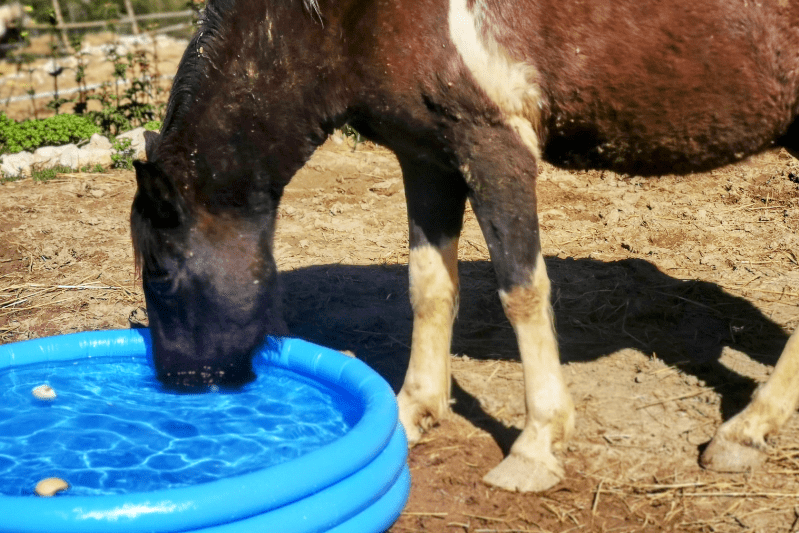
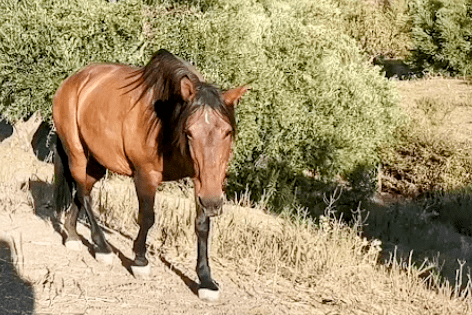
- To allow physical movement for muscles, hoof growth and rehabilitation.
The south of Spain is very hot and dry, and each year we see less rainfall here. When we do get rain it often comes in sudden storms which cause flooding because the dry land cannot absorb it fast enough, and in turn this causes erosion and vast damage and fatalities.
Emergency Relocation
With the aid of our volunteers’ donations and practical help, we have already introduced some enrichment elements but others are still on the ‘to do’ list. When we came to this site in 2016, it was totally unsuitable but we had to get the horses out of their previous home as they were being given away to abusive homes so there was no choice.
The land was steep with no fencing, shelter, or level place for feeding. The first two winters were appalling as we battled in knee deep mud to erect emergency fencing but now we have the basics in place. We still need a winter shelter but while we wait for the interminably slow Spanish planning process, we have invested in some specialist blankets that allow the horse to raise its hair to trap heat when needed. Standard blankets flatten the hair removing the insulation provided by the natural ‘fluffing’ response.
In 2022 re received permission to build a shelter…
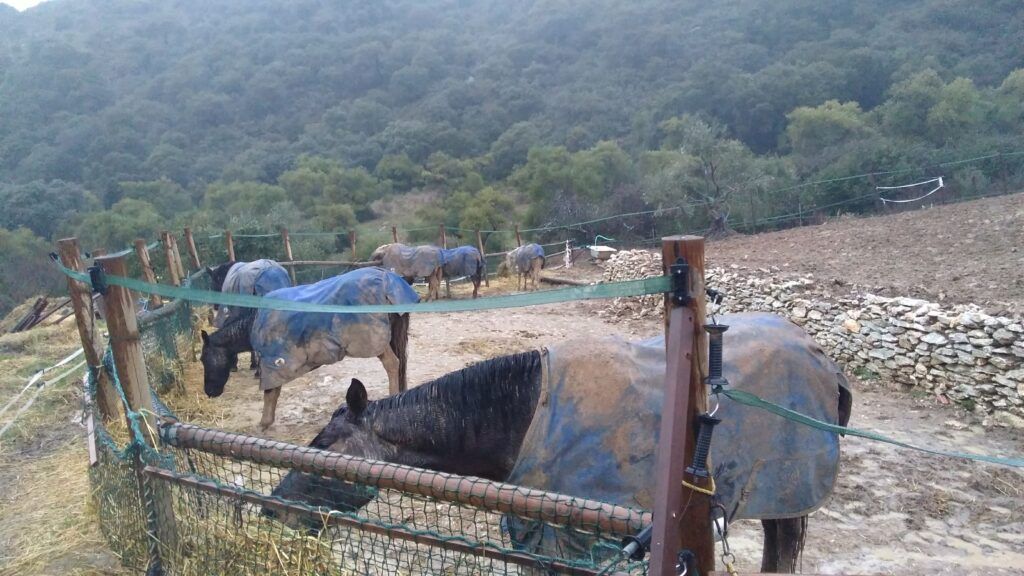

Horses Need Horses
Our horses live out together as this is essential for happy horses, even though there is some chasing or biting. Although this is common in domesticated horses, it’s rare in the wild so we are always considering what we may have created as humans that alters the horses’ natural behavior, so we can manage it better.
There is natural shelter in summer and we are in the process of replacing the emergency wire fencing with post and rail. Then, with clever design, we can recreate a little of nature within a restricted amount of land.
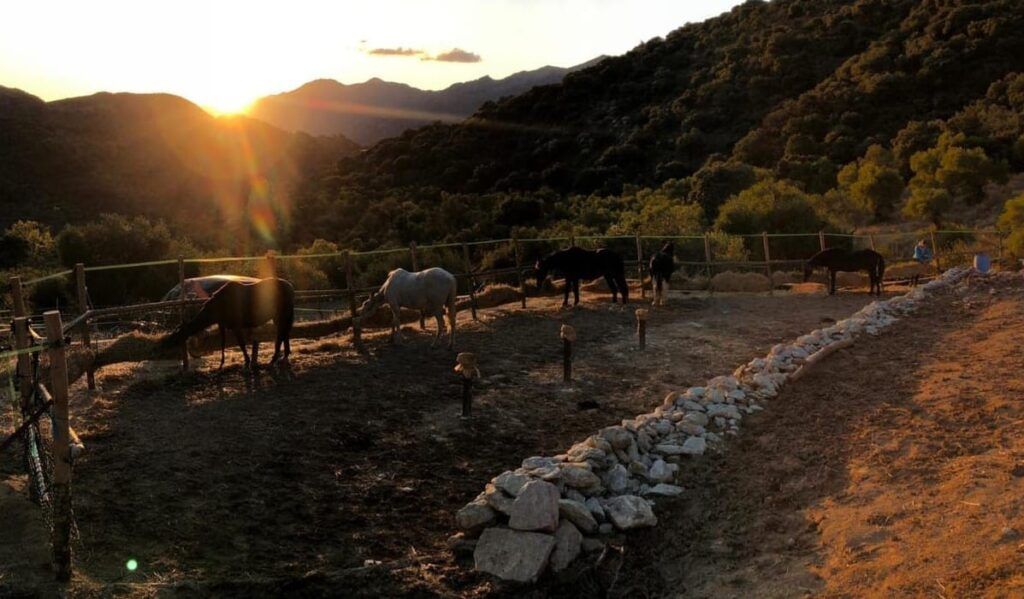
Recreating Nature
In the wild, horses walk 15-30km every day over rough terrain looking for food and water. This hardens and stimulates growth, or wears down their hooves so they keep in good condition.
Most domesticated horses walk considerably less than this mainly on soft grass or mud, so their feet don’t wear down naturally. The hooves get soft, leading to disease. A diet of rich grass can also cause laminitis, an extremely painful disease that can be fatal.
In the wild, the horse’s diet is much more varied, including shrubs, herbs and flowers – and they use a lot of energy to find it. Nor do they eat grain. Just as we are now discovering that a high carb diet isn’t good for us, the same is true for horses. It’s rich in sugars and starches which cause inflammation.
Helping hands
We still need to fence, connect other fields with gates and bridges and make varied surfacing and grazing systems.
Our basic flat feeding area, complete with post and rail fencing, was built in 2017. However, it needed further work to stop it turning to bog in winter. We had some stones donated in 2018, which helped considerably and next we are hoping to invest 3000€ in mud control slabs to further improve this area.
In the summer of 2018 we built some steps with a group of scouts that visited. This helps the horses with the entrance to the feeding area, and reduces the amount of mud that washes down onto it from the sloping hill above. We need a couple more steps built and mud control slabs placed on top
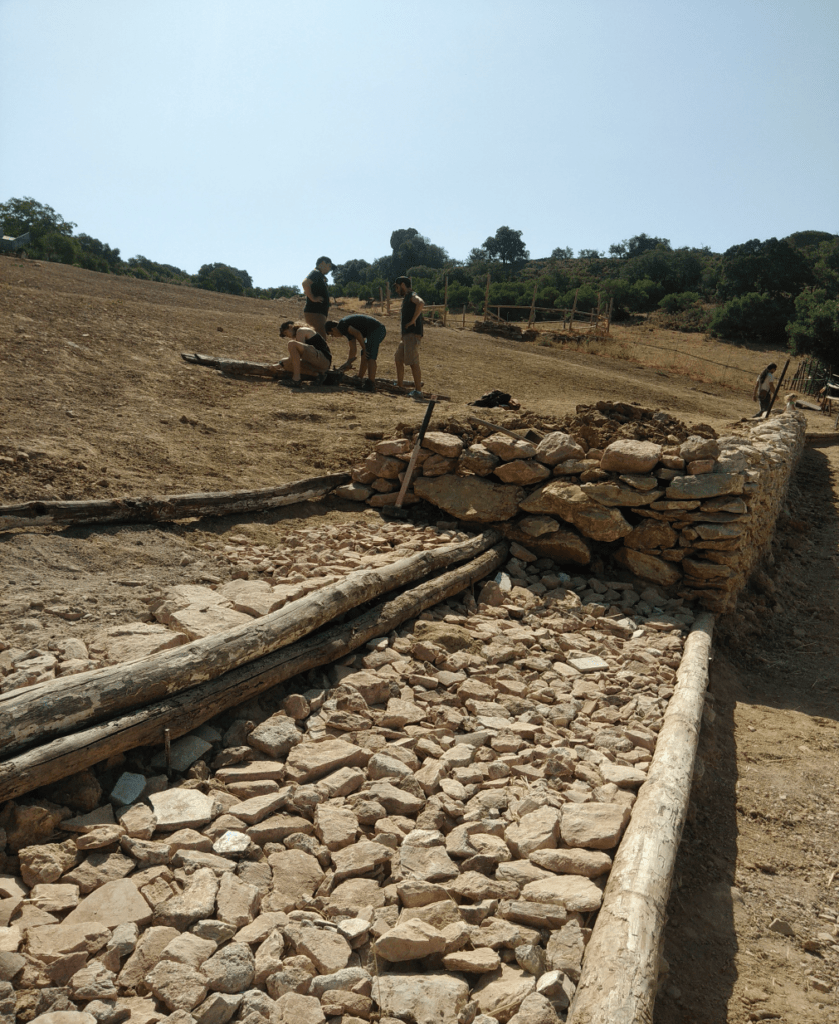
Beneficial plants
We would like to plant vetiver, as apart from its’ many healing properties, its’ dense root system will help to channel the rainwater into ditches, and retain the land to stop the waterfall of rain which pours through the stone walls and down the hill in winter, adding to the mud and erosion problem.
There are many other plants which are beneficial either for the land, the horses, or the insects which we will also plant in different areas of the fields to prevent erosion, channel rain water, create movement for the horses, and give them a longer season of grazing, whilst encouraging biodiversity.
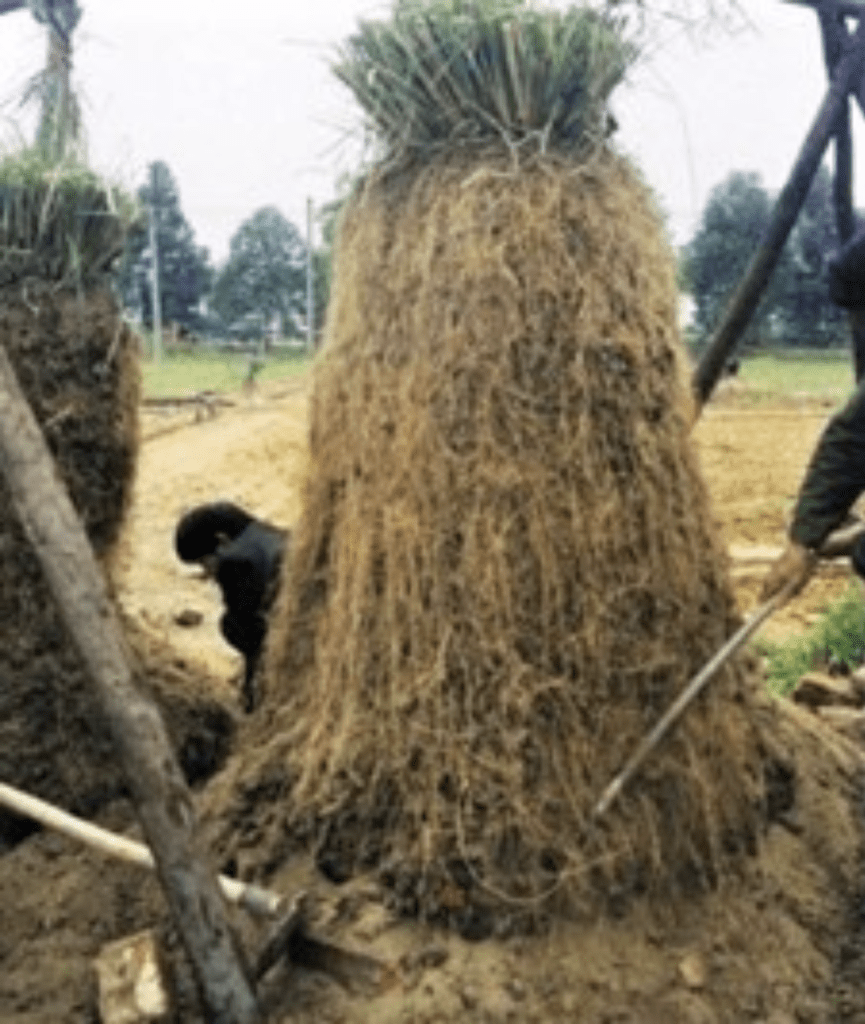
There is a problem with wild boar in the area because people let their domesticated pigs escape and breed with the boar, which then became uncontrollable after the wolf was wiped out here, just a couple of generations ago. This imbalance means we need to put very careful planning in place to be able to plant because the boar will lift it all out of the ground in one night if it is not protected adequately.
Protected Planting Areas
In certain areas, we would like to erect post and rail double-fencing in long narrow strips to form ‘plant/grazing islands’ within the fields. The horses will then need to pass around these islands to get to other areas of the field, creating interest and movement. The post and rail will allow the horses to reach over and under to nibble at the plants, trees, leaves, and grasses growing there. This will create some varied slow grazing. We will plant a variety of trees and shrubs beneficial to the horses’ diet and to provide summer shade.
Virtually nothing edible grows in the fields most of the year due to the climate here, so the horses are desperate for a bit of something fresh. They would need hundreds of acres for plants to still be able to grow naturally so this will protect them from heavy traffic and over grazing, allowing them to flourish as the horses effectively prune them, rather than destroy them.
These photos offers us great inspiration which we aim to incorporate into our horses’ pasture at Time and Space.
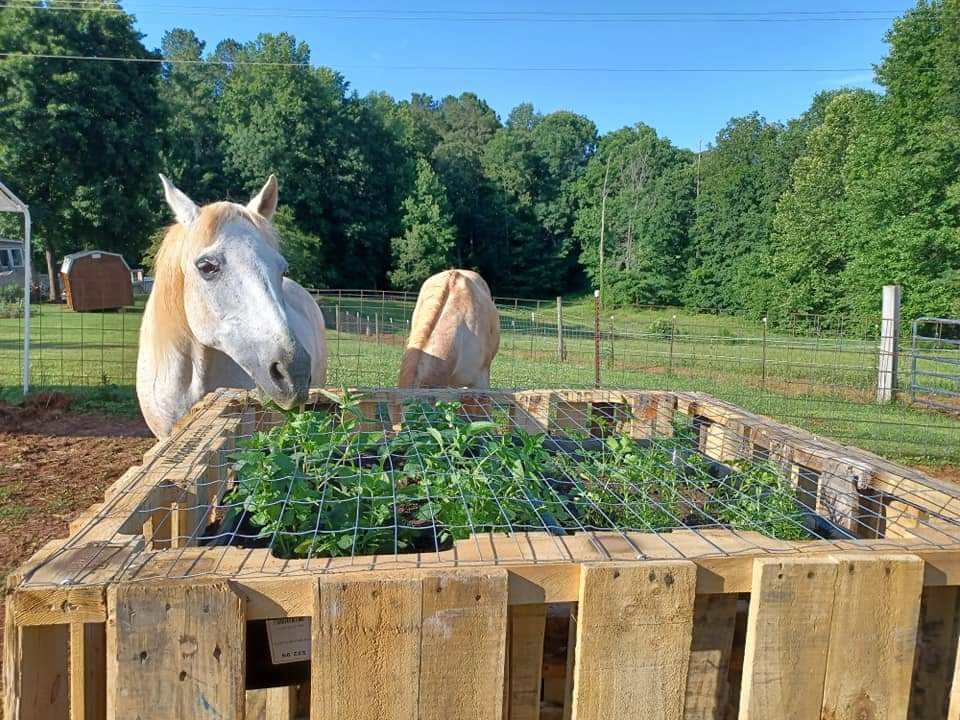
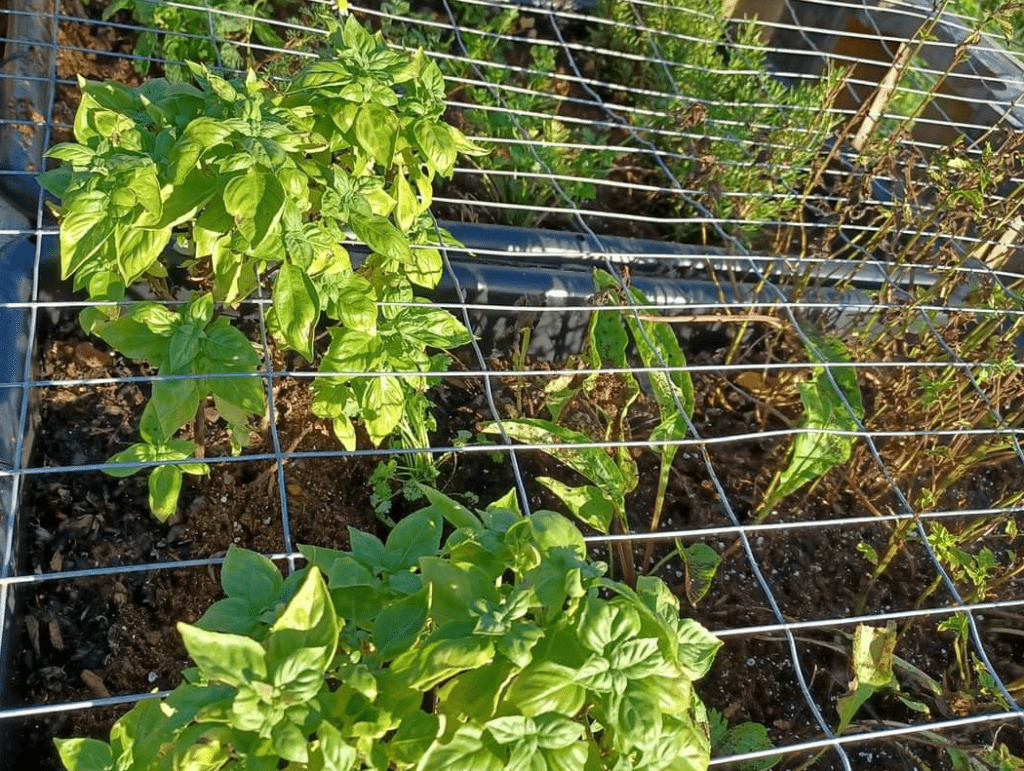
There are various designs we can implement to protect these planted areas from the wild boar. We can either fence the whole property if finance permits for a fence strong enough for boar; or plant in raised areas and protect the boxes with timber or wire, so that it is still within reach of the horses, but out of reach of the boar and horse hooves.
Water Feature
Another planned feature is a splash pool to help the horses to cool off and get rid of flies. They will be able to get deliciously wet and muddy to protect their skin and cool off. We would like to provide varied ground surfaces such as sand, stones and gravel. The harsher materials are necessary for good hoof health and the sand because they just love to roll and lie in it!
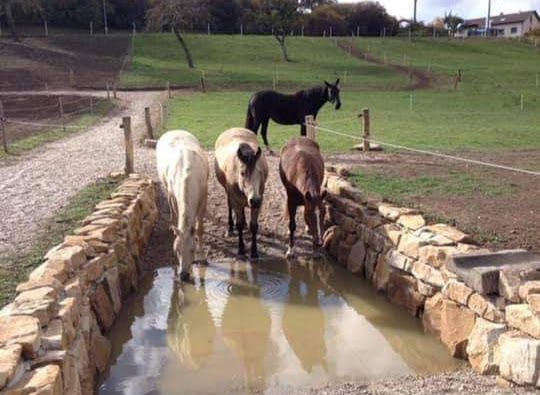
This photo offers us great inspiration which we aim to incorporate into our horses’ pasture at Time and Space.
Slow Feeders
The second-best diet after a free-roaming one, is good quality hay but it isn’t readily available in this area due to terrain and climate – most locals feed straw and grain. We also started out this way. But from 2017 we were able to finance enough year-round hay to be able to cut out grain. From 2020 we no longer had to mix hay with straw, but we’re able to feed hay as the main forage.
In the first years, the horses had their forage (hay and/or straw) on the ground. A lot got wasted in the mud, and they would eat it too fast and be without it for the rest of the day. Because the horses’ digestive system is designed for a grazing animal, they should eat little and often. If they eat too much in one go, they can get colic. If they are without any forage for more than a couple of hours, acids start to build up in their stomach which can lead to ulcers. Slow feeding systems can help prevent this.
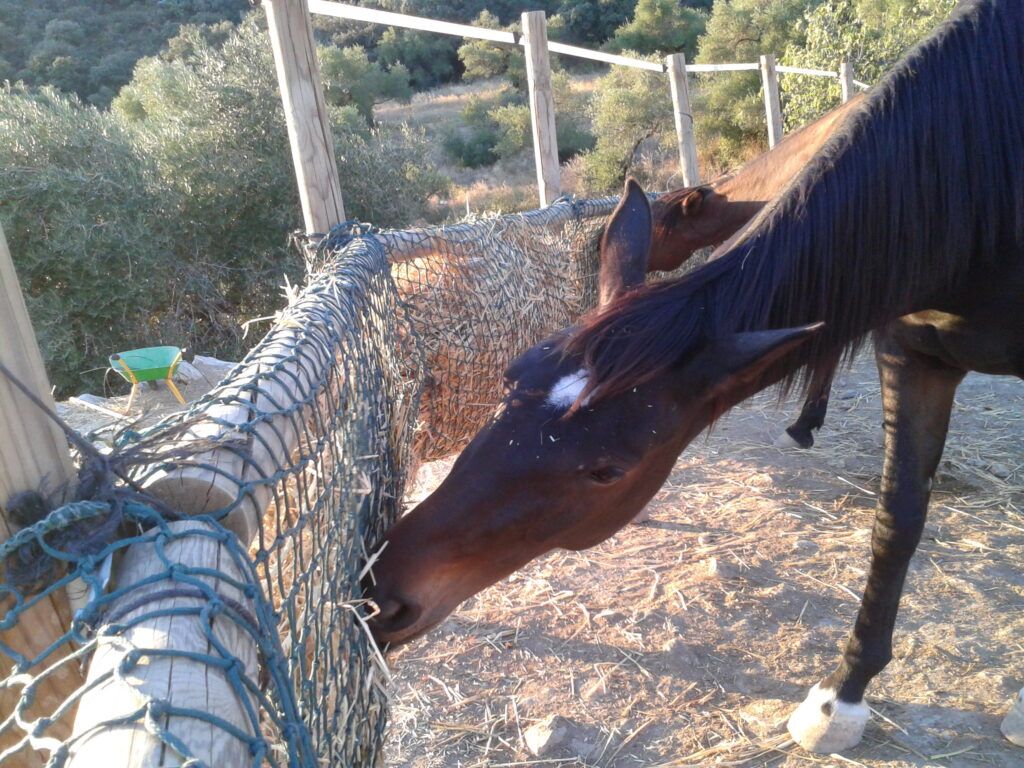
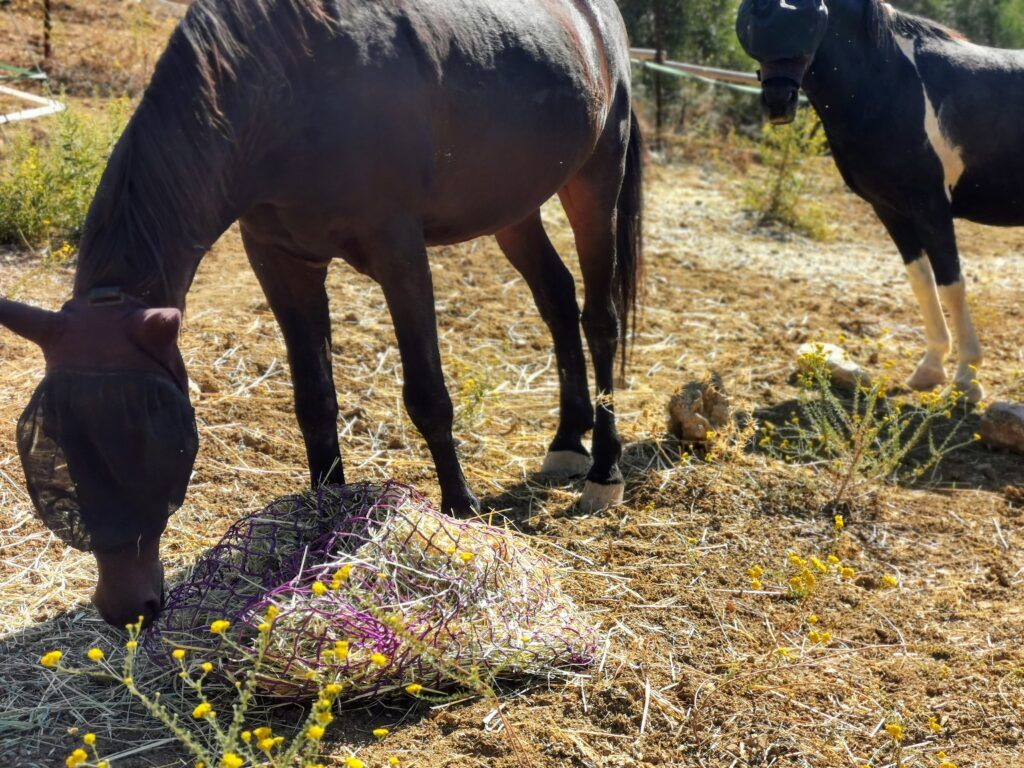
Our design for the flat loafing area massively improved our feeding system. We invested in large netting that is hung all across the fence-line providing mud-free forage all year long. The nets are large enough to fill just once a day. We noticed a difference in the horses’ behaviour immediately – they stayed warmer in winter, and calmer all year round with self regulation.
To prevent them from just standing along that fence line we have strategically placed fencing and openings so that the horses have to go the long way around, over varied terrain to reach other varied foraging areas, shade, and water. The proposed grazing islands will encourage much more movement still.

